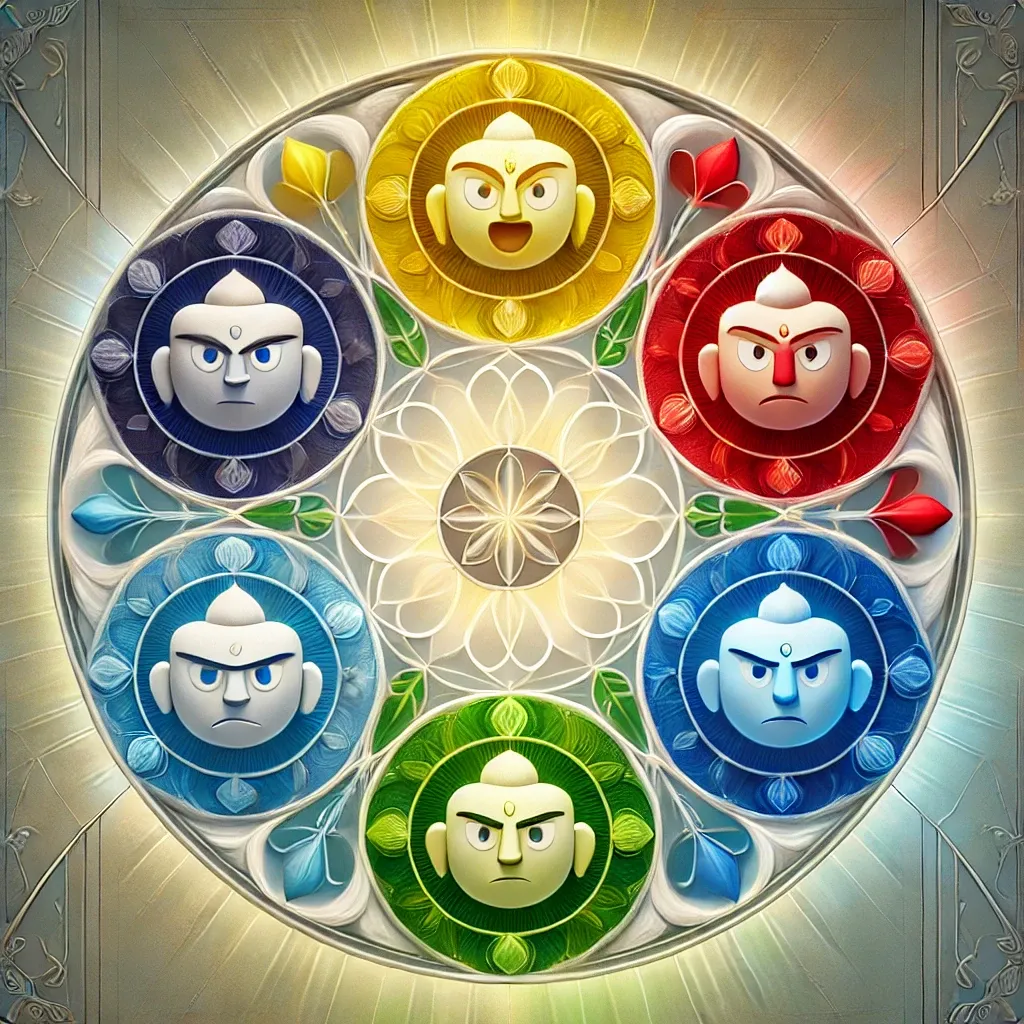The Pixar Book of the Dead - Bardo Thodol

I was listening to the Tibetan book of the dead as an audiobook. There's some vivid and scary imagery, so I asked ChatGPT to walk me through it. So that I didn't have nightmares, I asked to draw it, as if it were a Pixar movie..
The Bardo Thodol (Tibetan Book of the Dead) presents vivid, symbolic images encountered in the "bardos" or intermediate states, intended to guide the consciousness toward liberation. Key visual elements include:
Peaceful Deities

Early in the journey, the consciousness encounters 42 peaceful deities. These include figures like the Buddha Vairocana, who symbolizes the ultimate truth and the unity of all things. Peaceful deities are surrounded by radiant, gentle light in various colors, each representing one of the wisdoms (e.g., blue for mirror-like wisdom, white for the wisdom of reality). These images evoke calmness and acceptance, guiding the consciousness towards peaceful awareness.
Wrathful Deities

Following the peaceful deities, 58 wrathful deities appear. These beings are often fierce and intense, with terrifying expressions, multiple limbs, and animalistic features. They hold symbols of power, like vajras or skull cups, representing the shattering of egoic illusions. Their ferocity symbolizes the inner struggle with one’s fears and attachments; their purpose is to awaken and purify rather than to harm.
Mandala of Five Buddha Families

The mandala presents the Five Buddha Families, each associated with a different color (blue, yellow, red, green, white) and one of the five wisdoms. These mandalas serve as maps of the mind’s nature, showing the potential for transformation of negative emotions (anger, pride, desire, jealousy, and ignorance) into corresponding wisdoms. This sacred geometry offers a visual structure for understanding enlightenment.
Clear Light and Primal Luminosity

The Clear Light of Reality appears as an intensely bright white light, symbolizing the pure nature of consciousness and ultimate truth. This light is described as overpowering yet serene. Embracing the Clear Light is crucial in the Bardo; it represents the potential for immediate liberation if the consciousness can merge with it, recognizing it as its own true nature.
Karmic Visions and Illusory Landscapes

Various landscapes and visions appear, such as rivers of blood, narrow paths, and storms, representing karmic consequences and the results of past actions. These serve as confrontational images intended to spur the consciousness toward compassion, clarity, and detachment from worldly attachments and desires.
Tunnels and Portals of Rebirth

The consciousness may encounter tunnels or passageways leading to rebirth. These dark, shadowy portals are filled with sensations pulling it towards various realms, influenced by residual attachments or aversions. Colors, sounds, and vibrations can all affect the spirit’s trajectory here, marking a critical choice-point between rebirth or liberation.
These images in the Bardo Thodol are richly layered with symbolic meaning, providing visual representations of both the mind’s true nature and its illusory constructs. They guide the consciousness to transcend fear and recognize its inherent luminosity.
